Abstract
In the acquired immunodeficiency syndrome (AIDS) era, adequate management of sexually transmitted diseases (STDs) is a primary concern in Africa. Assessed in this study is the clinical efficacy and feasibility of WHO-recommended therapeutic algorithms for genital discharges and ulcers, diagnosed without laboratory tests, for use at the primary health care level. Drugs were sold on a cost-recovery basis and included intramuscular ceftriaxone and oral ciprofloxacin for single-dose therapy of gonorrhoea and chancroid. During April 1993 in 10 peripheral health care centres in Abidjan, Côte d'Ivoire, a total of 207 patients were followed up, including 89 cases of male urethritis, 92 cases of vaginal discharges and 26 cases of genital ulcers; clinical success, assessed 7 days after the onset of therapy, was, respectively, 92%, 87%, and 100%. Less than 10% of the 207 patients were referred to the next care level, an acceptable rate from a public health point of view. Medical adherence to the algorithms was excellent for urethral discharges and genital ulcers but poor for vaginal discharges, partly because of intentional therapeutic modifications, without detriment to success. For drugs, the average cost per cure was 1546 francs CFA (US$ 5.60) (maximum, 2980 francs CFA (US$ 10.70). Effective and affordable treatments for STDs are necessary for their realistic case management in Africa.
Full text
PDF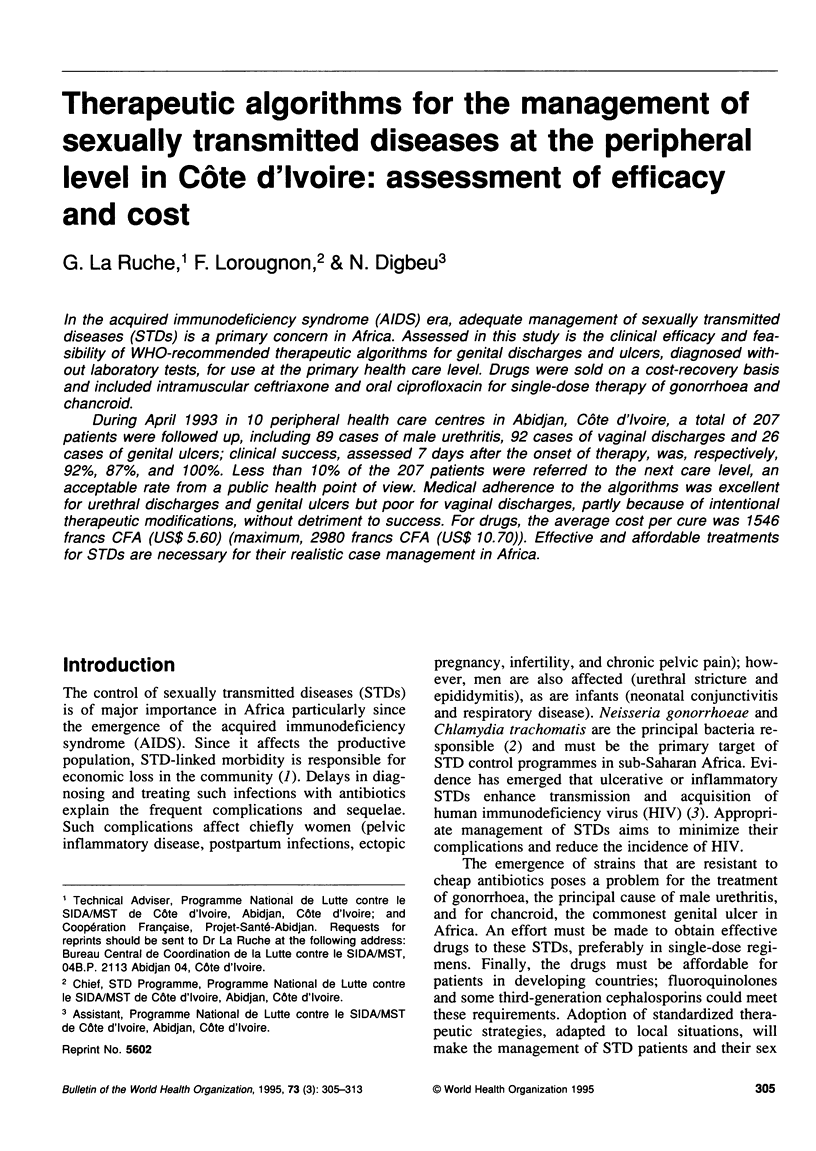

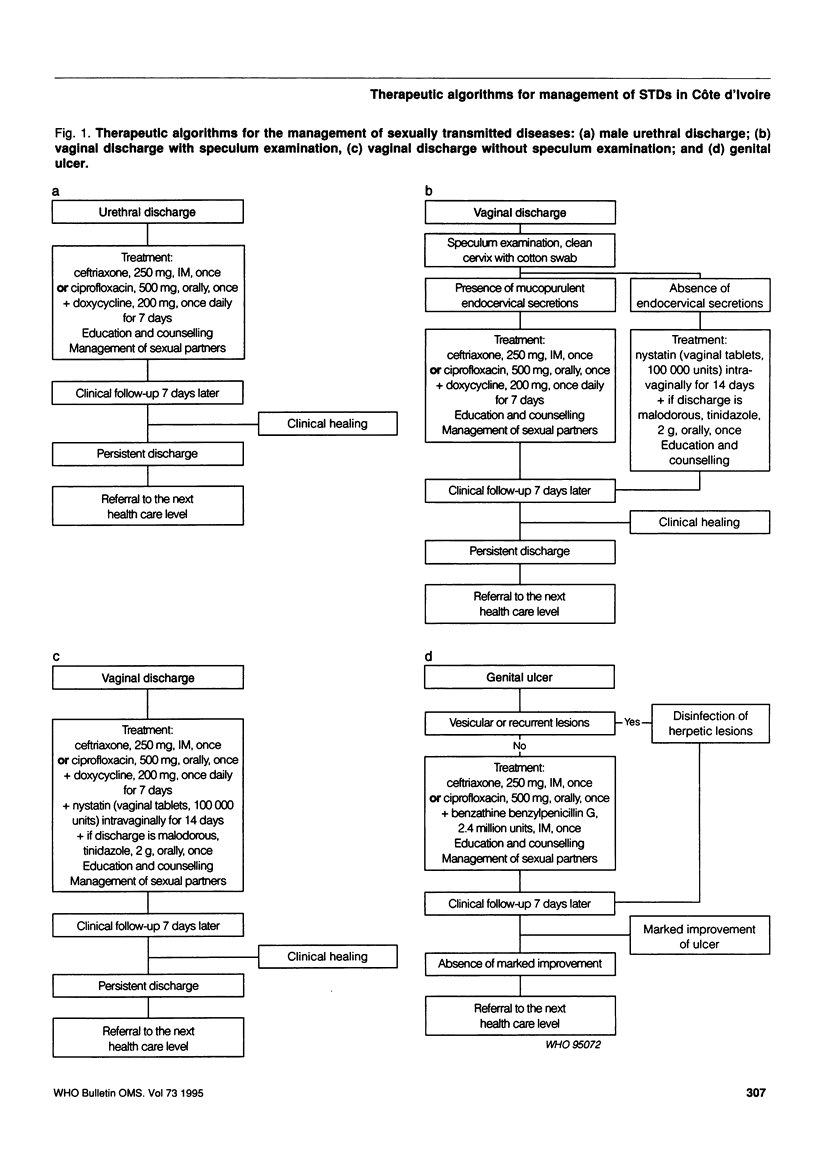
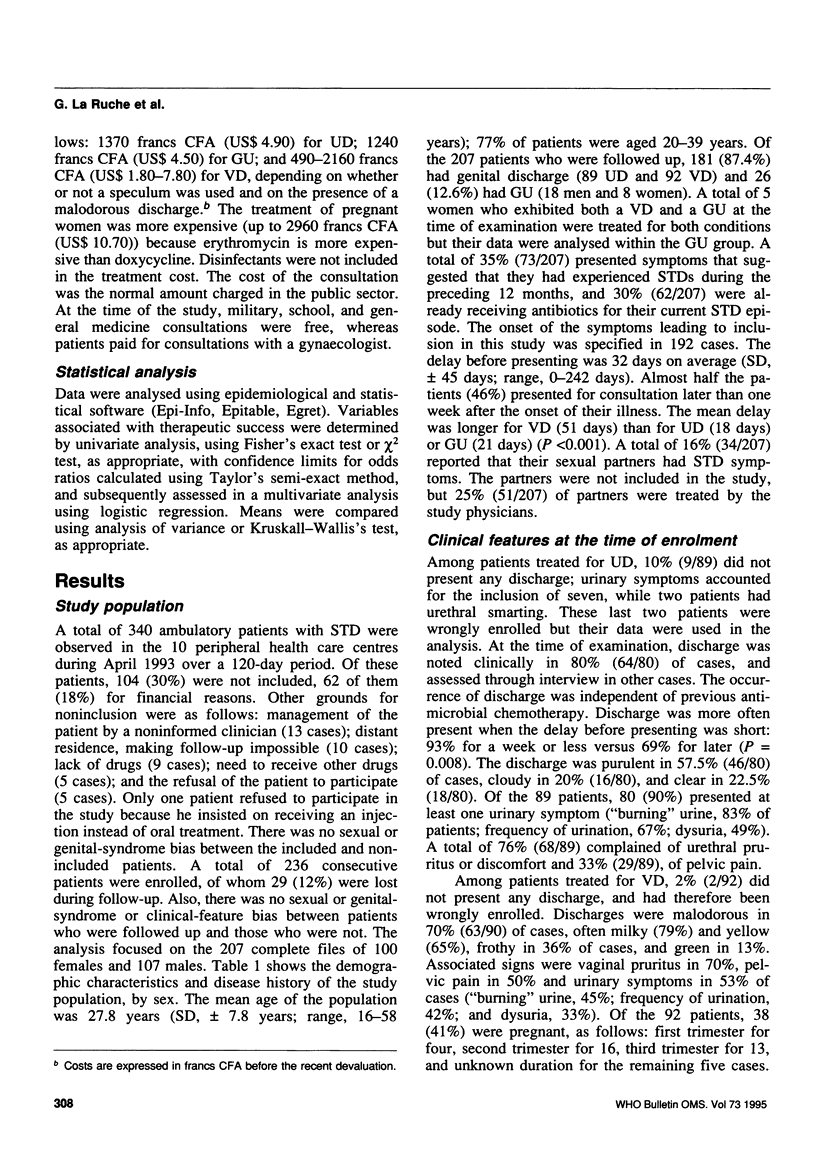
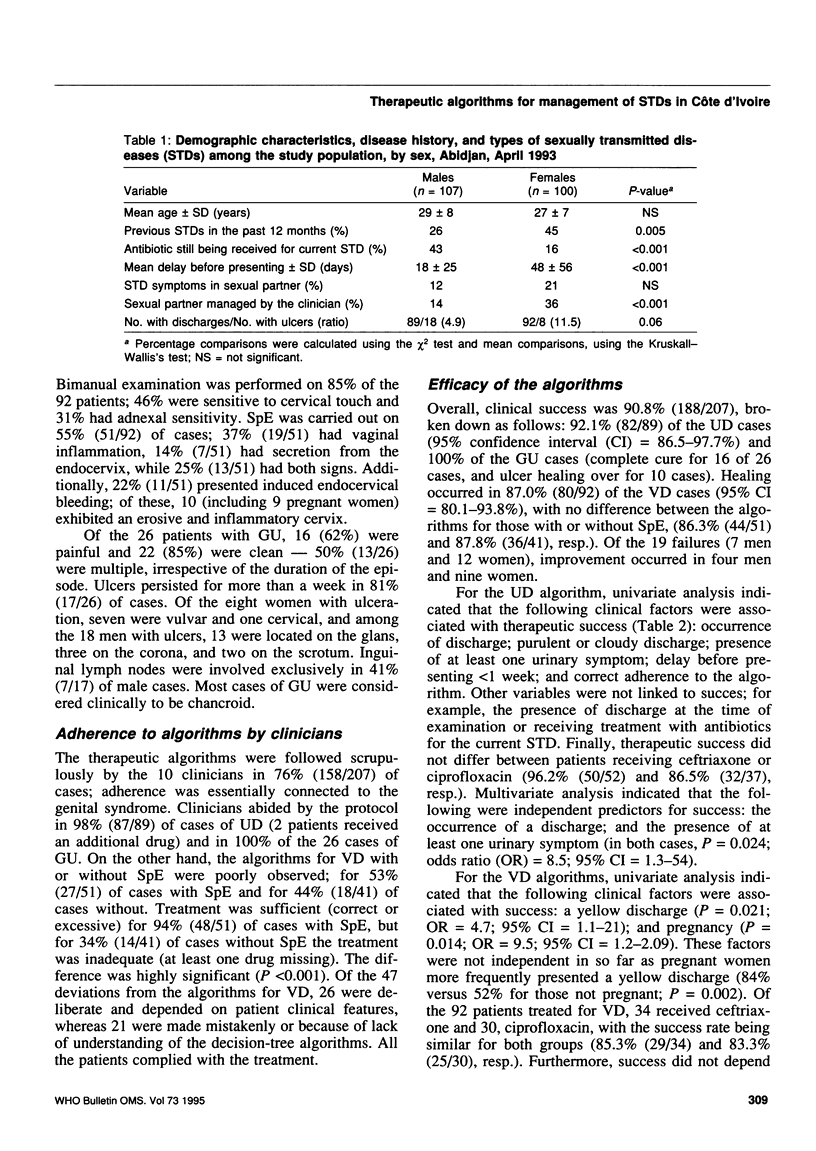
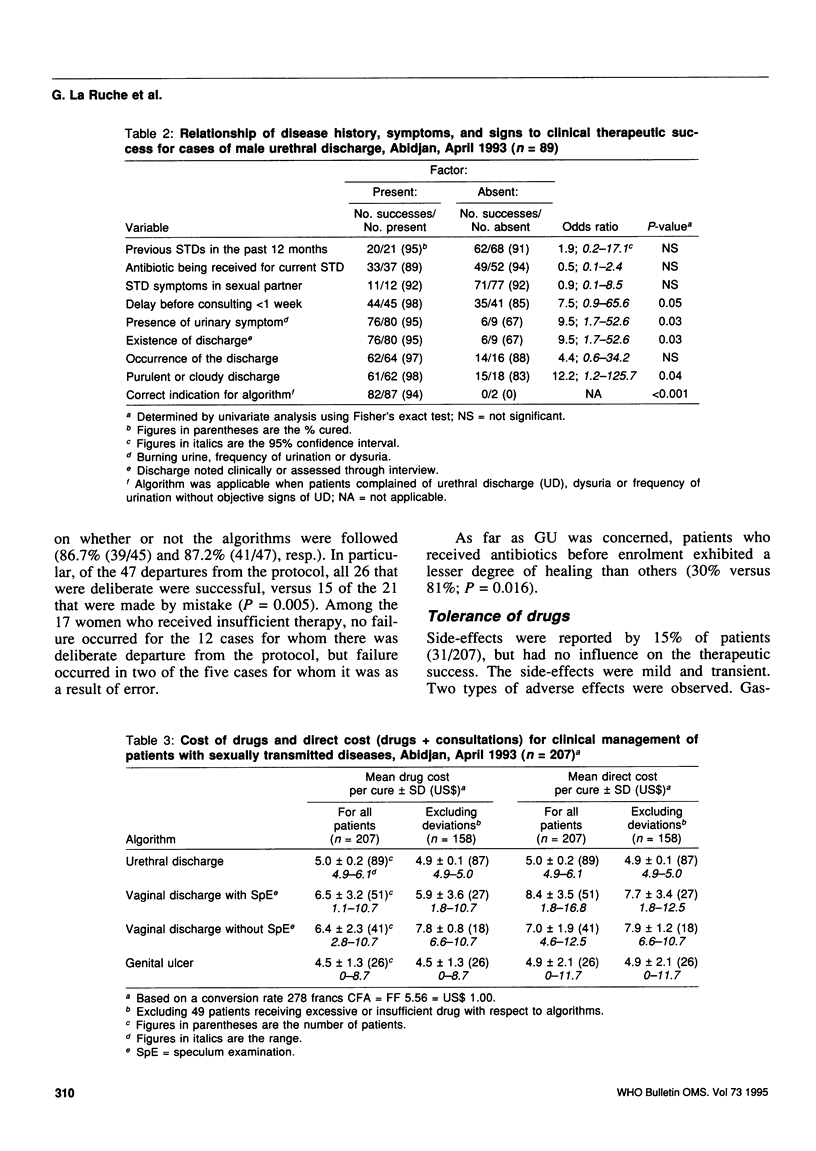
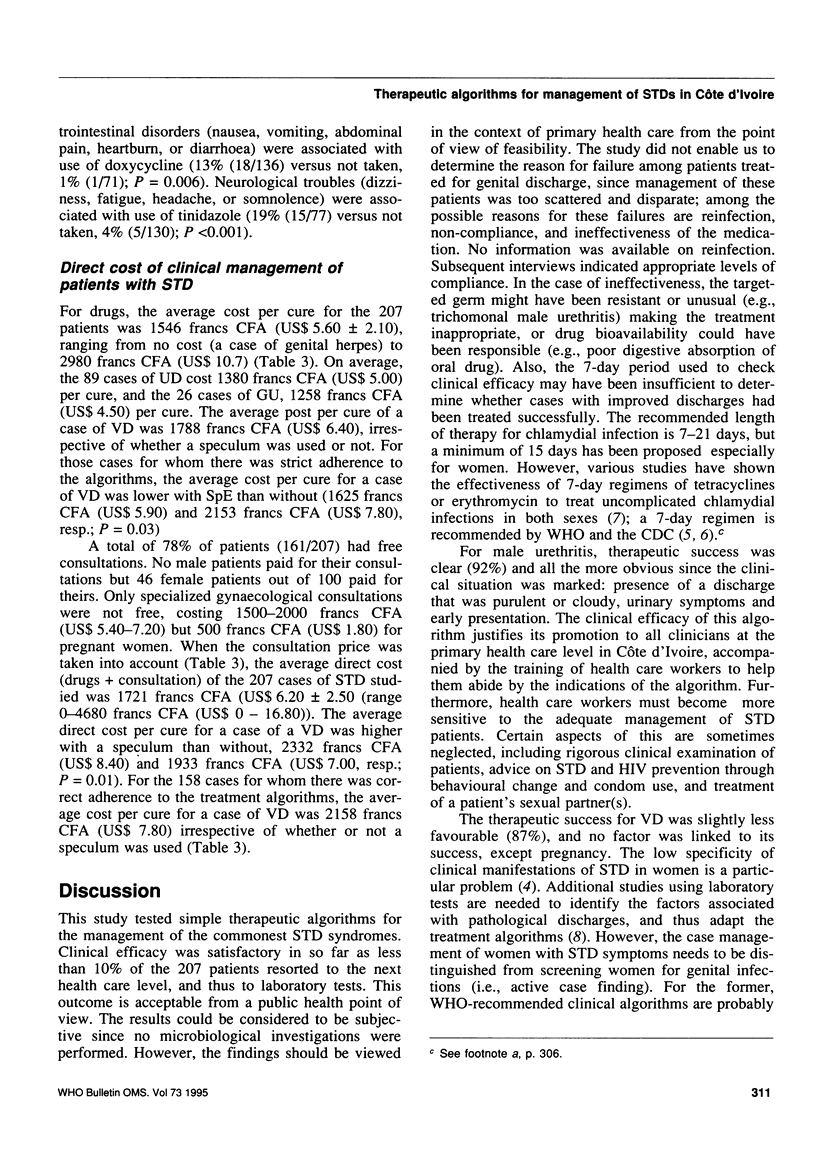
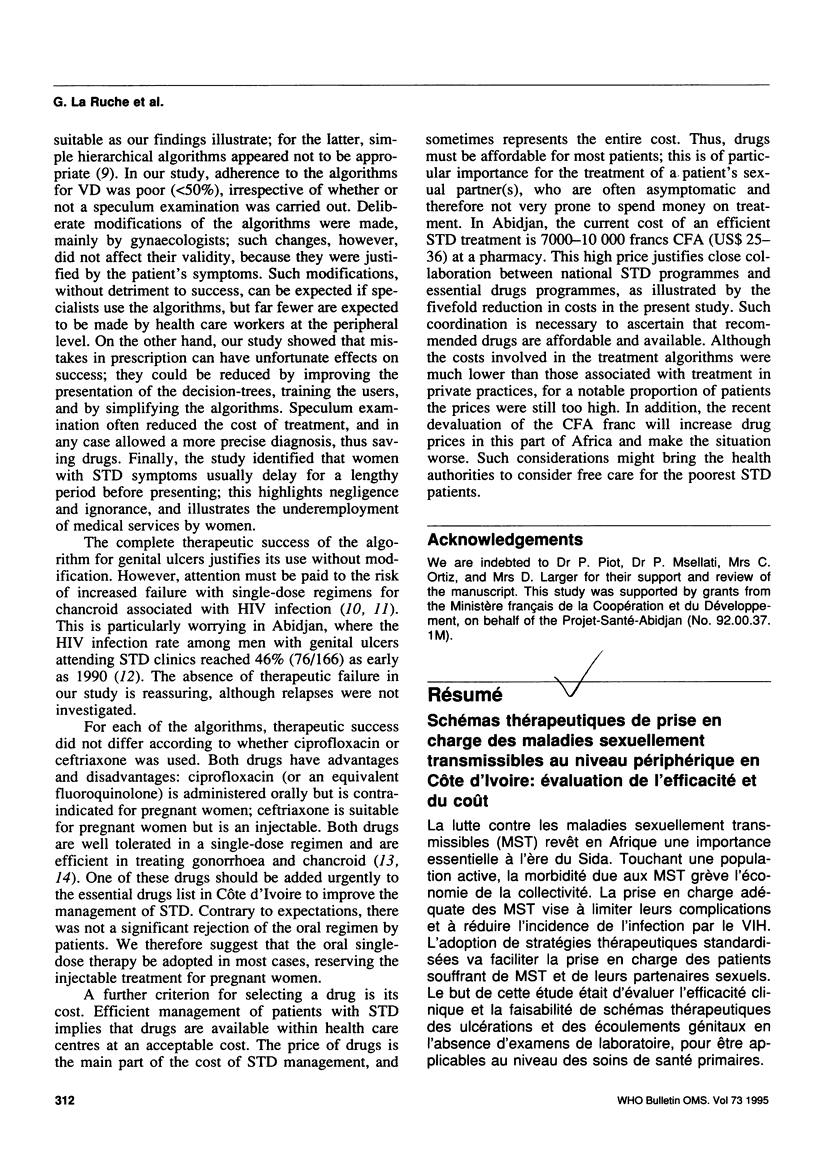
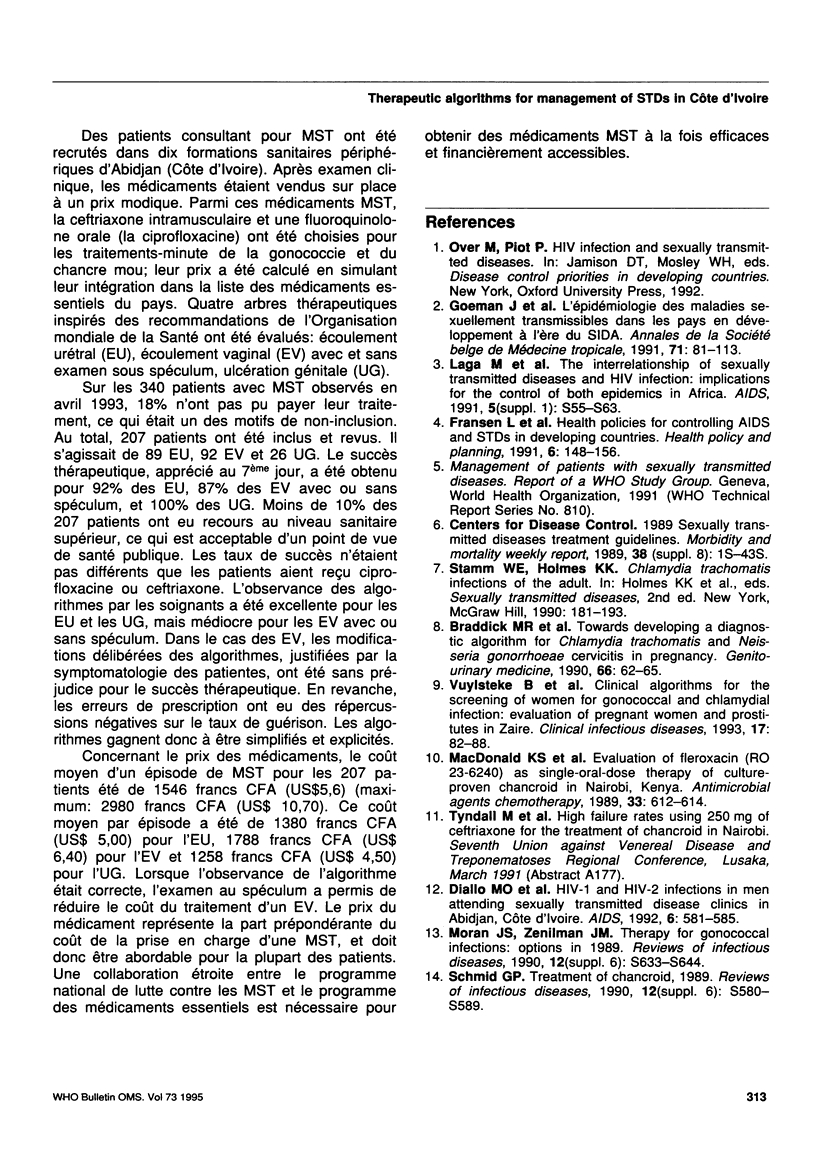
Selected References
These references are in PubMed. This may not be the complete list of references from this article.
- Braddick M. R., Ndinya-Achola J. O., Mirza N. B., Plummer F. A., Irungu G., Sinei S. K., Piot P. Towards developing a diagnostic algorithm for Chlamydia trachomatis and Neisseria gonorrhoeae cervicitis in pregnancy. Genitourin Med. 1990 Apr;66(2):62–65. doi: 10.1136/sti.66.2.62. [DOI] [PMC free article] [PubMed] [Google Scholar]
- Diallo M. O., Ackah A. N., Lafontaine M. F., Doorly R., Roux R., Kanga J. M., Heroin P., De Cock K. M. HIV-1 and HIV-2 infections in men attending sexually transmitted disease clinics in Abidjan, Côte d'Ivoire. AIDS. 1992 Jun;6(6):581–585. doi: 10.1097/00002030-199206000-00010. [DOI] [PubMed] [Google Scholar]
- Goeman J., Meheus A., Piot P. L'epidémiologie des maladies sexuellement transmissibles dans les pays en développement à l'ère du SIDA. Ann Soc Belg Med Trop. 1991 Jun;71(2):81–113. [PubMed] [Google Scholar]
- Laga M., Nzila N., Goeman J. The interrelationship of sexually transmitted diseases and HIV infection: implications for the control of both epidemics in Africa. AIDS. 1991;5 (Suppl 1):S55–S63. [PubMed] [Google Scholar]
- MacDonald K. S., Cameron D. W., D'Costa L., Ndinya-Achola J. O., Plummer F. A., Ronald A. R. Evaluation of fleroxacin (RO 23-6240) as single-oral-dose therapy of culture-proven chancroid in Nairobi, Kenya. Antimicrob Agents Chemother. 1989 May;33(5):612–614. doi: 10.1128/aac.33.5.612. [DOI] [PMC free article] [PubMed] [Google Scholar]
- Moran J. S., Zenilman J. M. Therapy for gonococcal infections: options in 1989. Rev Infect Dis. 1990 Jul-Aug;12 (Suppl 6):S633–S644. doi: 10.1093/clinids/12.supplement_6.s633. [DOI] [PubMed] [Google Scholar]
- Schmid G. P. Treatment of chancroid, 1989. Rev Infect Dis. 1990 Jul-Aug;12 (Suppl 6):S580–S589. doi: 10.1093/clinids/12.supplement_6.s580. [DOI] [PubMed] [Google Scholar]
- Vuylsteke B., Laga M., Alary M., Gerniers M. M., Lebughe J. P., Nzila N., Behets F., Van Dyck E., Piot P. Clinical algorithms for the screening of women for gonococcal and chlamydial infection: evaluation of pregnant women and prostitutes in Zaire. Clin Infect Dis. 1993 Jul;17(1):82–88. doi: 10.1093/clinids/17.1.82. [DOI] [PubMed] [Google Scholar]


